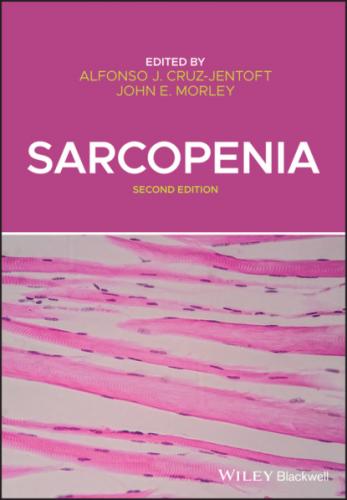ADL, activities of daily living; EWGSOP, European Working Group on Sarcopenia in Older People; FNIH, Foundation for the National Institutes of Health; IWGS, International Working Group on Sarcopenia; SPPB, short physical performance battery.
Woo et al. [30] reported that a three‐item scale (strength, ability to climb stairs, and need for assistance in walking) had a better diagnostic area under the curve and better predictive value of bad outcomes compared with the five‐item SARC‐F. Lim et al. [31] studied 200 participants in Singapore and felt that the shorter version was not superior to the full SARC‐F. They did suggest that the falls item was not an important factor in making the diagnosis. Yang et al. [32] found that the three‐item questionnaire had a worse area under the curve than the SARC‐F.
Barbosa‐Silva et al. [33] found that calf circumference together with SARC‐F had greatly improved sensitivity when compared with SARC‐F alone with the European Working Group on Sarcopenia in Older People (EWGSOP) as a gold standard. Bahat et al. [34] found that SARC‐F plus calf circumference improved specificity but not sensitivity when compared with SARC‐F. In 120 participants in Indonesia, SARC‐F plus calf circumference had good diagnostic performance for sarcopenia [35]. Mo et al. [36] in a meta‐analysis found that SARC‐CalF has excellent accuracy with moderate sensitivity as a diagnostic tool for sarcopenia.
Overall, these studies support the concept that SARC‐F or SARC‐CalF is a good screening tool for sarcopenia. Adding age and body mass index may further enhance its accuracy [37].
OTHER SCREENING TESTS FOR SARCOPENIA
The short portable sarcopenia measure (SPSM) consists of lean muscle mass by bioimpedance, grip strength adjusted for height and five chair stands [38]. The SPSM compares well to DEXA measurements of lean mass. It is more sensitivity but no more specific than the SARC‐F [5].
The Mini‐Sarcopenic Risk Assessment (MRSA‐5) (age, activity, food intake, weight loss, and hospital admission) has good sensitivity but poorer specificity. The three‐item MRSA has similar diagnostic accuracy to the SARC‐F [39, 40], but not as good as the SARC‐CalF [32].
Age, grip strength, and calf circumference in combination has good specificity and sensitivity for sarcopenia [41]. However, at this stage there is only one study.
CONCLUSION
Both SARC‐F and SARC‐CalF have been shown to be excellent, quick‐to‐use screening tools for sarcopenia. SARC‐F is now recommended for screening by the European Working Group on Sarcopenia in Older People 2 [42], the International Conference on Sarcopenia and Frailty Research [43], and the Society of Sarcopenia, Cachexia and Wasting Disorders [44]. This rapid screen should be done yearly as part of the Annual Medicare Wellness examination in the United States [45] and included in the primary care physician’s armamentarium to screen all persons 65 years or older at least once a year. Persons who screen positive should be encouraged to become involved in an exercise program.
DISCLOSURES
The author declares there are no conflicts.
REFERENCES
1 1. Baumgartner RN, Wayne SJ, Waters DL, Janssen I, Gallagher D, Morley J. Sarcopenia obesity predicts instrumental activities of daily living disability in the elderly. Obes Res 2004; 12:1995–2004.
2 2. Morley JE. Frailty and sarcopenia: The new geriatric giants. Rev Invest Clin 2016; 68:59–67.
3 3. Morley JE, Bauer JM. Editorial: The future of sarcopenia. Curr Opin Coin Nutr Metab Care 2019; 22:1–3.
4 4. Cruz‐Jentoft AJ, Sayer AA. Sarcopenia. Lancet 2019; 393:2636–2646.
5 5. Malmstrom TK, Morley JE. SARC‐F: A simple questionnaire to rapidly diagnose sarcopenia. J Am Med Dir Assoc 2013; 14:531–532.
6 6. Cao L, Chen S, Zou C, Ding X, Gao L, Liao Z, et al. A pilot study of the SARC‐F scale on screening sarcopenia and physical disability in the Chinese older people. J Nutr Health Aging 2014; 18:277–283.
7 7. Woo J, Leung J, Morley JE. Validating the SARC‐F: A suitable community screening tool for sarcopenia? J Am Med Dir Assoc 2014; 15:630–634.
8 8. Woo J, Leung J, Morley JE. Defining sarcopenia in terms of incident adverse outcomes. J Am Med Dir Assoc 2015; 16:247–252.
9 9. Malmstrom TK, Miller DK, Simonsick EM, Ferrucci L, Morley JE. SARC‐F: A symptom score to predict persons with sarcopenia at risk for poor functional outcomes. J Cachexia Sarcopenia Muscle 2016; 7:28–36.
10 10. Tanaka S, Kamiya K, Hamazaki N, Matsuzawa R, Nozaki K, Maekawa E, et al. Utility of SARC‐F for assessing physical function in elderly patients with cardiovascular disease. J Am Med Dir Assoc 2017; 18:176–181.
11 11. Ida S, Kaneko R, Murata K. SARC‐F for screening of sarcopenia among older adults: A meta‐analysis of screening test accuracy. J Am Med Dir Assoc 2018; 19:685–689.
12 12. Su Y, Woo JW, Kwok TCY. The added value of SARC‐F to prescreening using FRAX for hip fracture prevention in older community adults. J Am Med Dir Assoc 2019; 20:83–89.
13 13. Kotiarczyk MP, Perera S, Nace DA, Resnick NM, Greenspan SL. Identifying sarcopenia in female long‐term care residents: A comparison of current guidelines. J Am Geriatr Soc 2018; 66:316–320.
14 14. Ida S, Murata K, Nakadachi D, Ishihara Y, Imataka K, Uchida A, et al. Development of a Japanese version of the SARC‐F for diabetic patients: An examination of reliability and validity. Aging Clin Exp Res 2017; 29:935–942.
15 15. Ida S, Kojima Y, Hamaoka S, Urawa N, Araki J, Kaneko R, Murata K. Validity of Japanese version of SARC‐F questionnaire in patients with chronic liver disease. J Gastroenterol Hepatol 2019; 34:947–953.
16 16. Ida S, Kaneko R, Nagata H, Noguchi Y, Araki Y, Nakai M, et al. Association between sarcopenia and sleep disorder in older patients with diabetes. Geriatr Gerontol Int 2019; 19:399–403.
17 17. Nozoe M,
